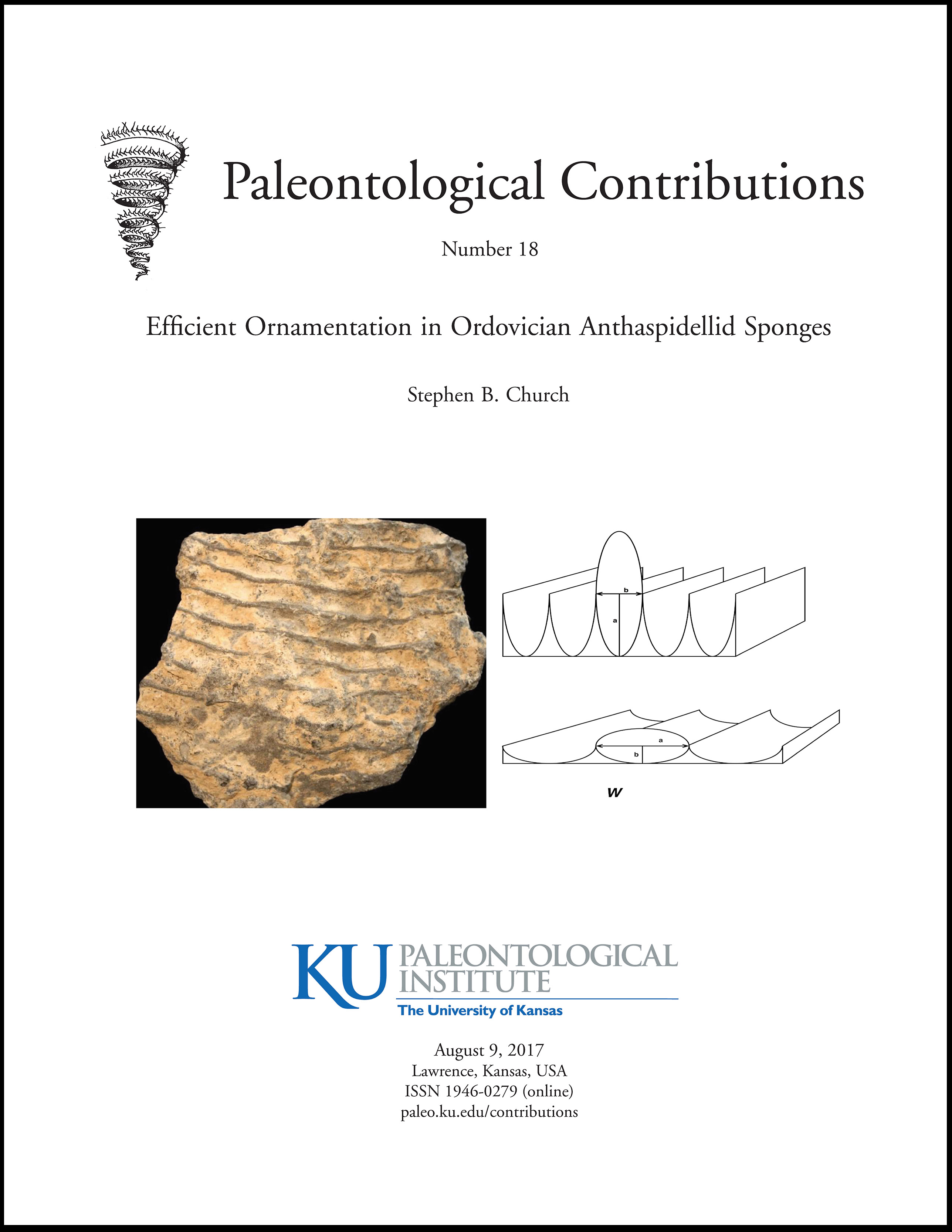Efficient Ornamentation in Ordovician Anthaspidellid Sponges
DOI:
https://doi.org/10.17161/1808.24771Abstract
Lithistid orchoclad sponges within the family Anthaspidellidae Ulrich in Miller, 1889 include several genera that added ornate features to their outer-wall surfaces during Early Ordovician sponge radiation. Ornamented anthaspidellid sponges commonly constructed annulated or irregularly to regularly spaced transverse ridge-and-trough features on their outer-wall surfaces without proportionately increasing the size of their internal wall or gastral surfaces. This efficient technique of modifying only the sponge’s outer surface without enlarging its entire skeletal frame conserved the sponge’s constructional energy while increasing outer-wall surface-to-fluid exposure for greater intake of nutrient bearing currents. Sponges with widely spaced ridge-and-trough ornament dimensions predominated in high-energy settings. Widely spaced ridges and troughs may have given the sponge hydrodynamic benefits in high wave force settings. Ornamented sponges with narrowly spaced ridge-and-trough dimensions are found in high energy paleoenvironments but also occupied moderate to low-energy settings, where their surface-to-fluid exposure per unit area exceeded that of sponges with widely spaced surface ornamentations.
Downloads
Published
Issue
Section
License
Copyright (c) 2017 Stephen B. Church

This work is licensed under a Creative Commons Attribution 4.0 International License.
- Authors retain copyright and the works are licensed under a Creative Commons Attribution 4.0 License that allows others to share the work with an acknowledgement of the work's authorship and initial publication in this journal.
- Authors are permitted and encouraged to post their work online (e.g., in institutional repositories or on their website) prior to and during the submission process, as it can lead to productive exchanges, as well as earlier and greater citation of published work (See The Effect of Open Access)


